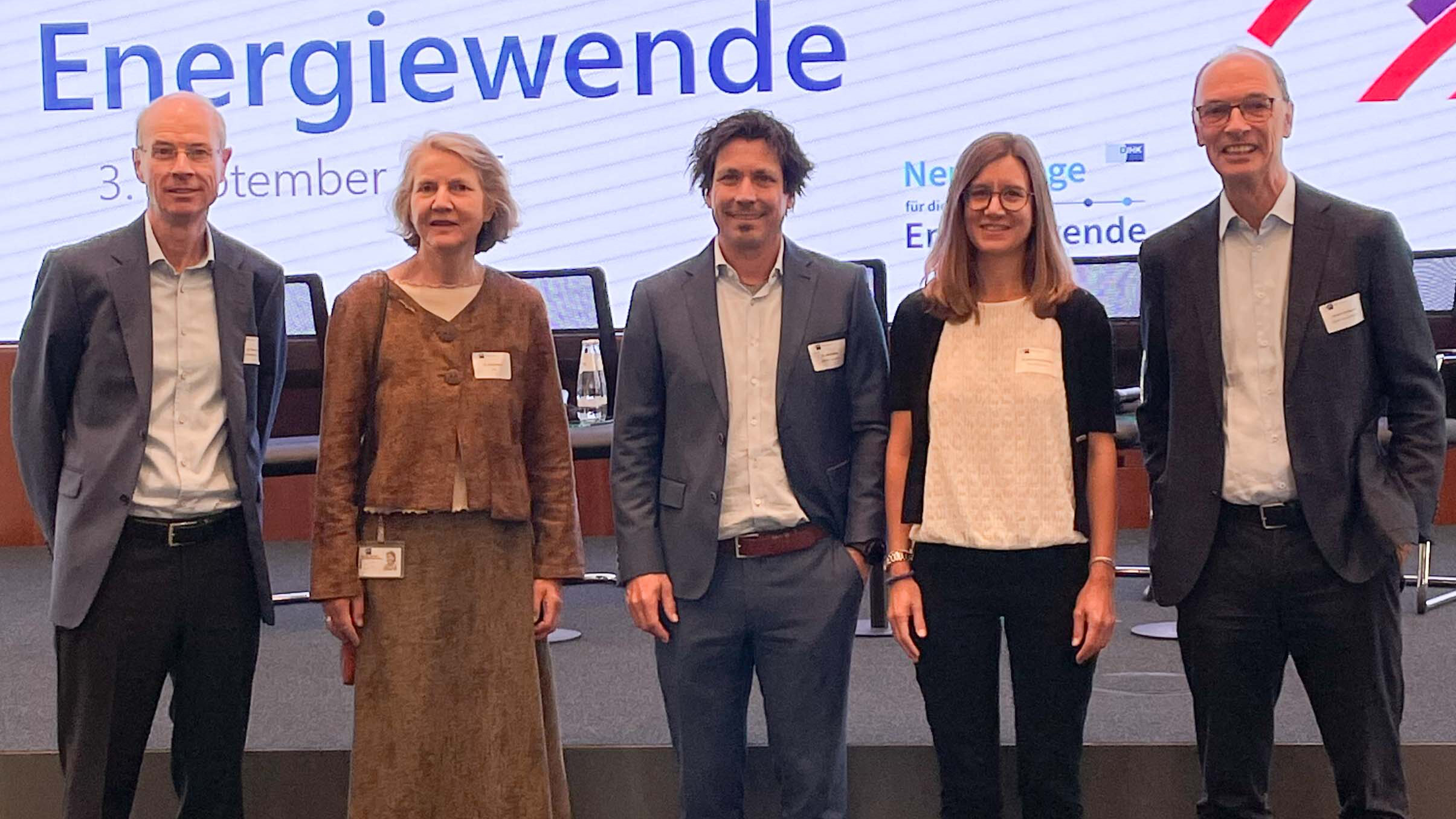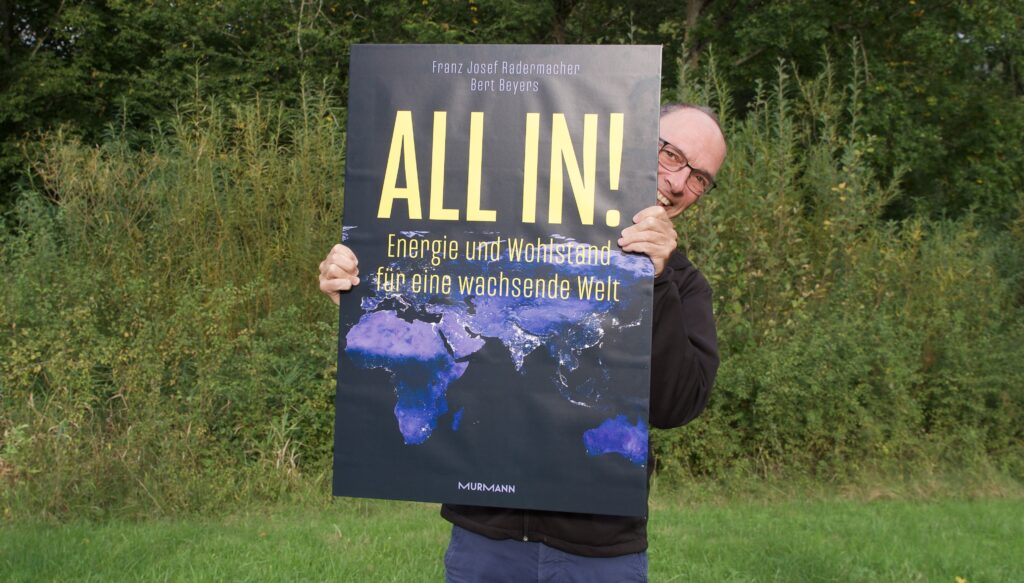At this point, some news of the last few weeks will be addressed which, from GES’ point of view, are reason for hope because they contain building blocks of a possible global solution and / or could help to develop a realistic view of the challenges ahead of us.
In its new synthesis report, the Intergovernmental Panel on Climate Change (IPCC) assumes that the 1.5 degree target can hardly be met. It is likely that it will already be exceeded in the next decade. Currently, the average warming is 1.1 degrees, compared to pre-industrial levels. One message of the report is: “Financing, technology and international cooperation are crucial prerequisites for accelerated climate protection measures.” With its reference solution being finalised (or about to be published or scheduled for publication in June), GES is helping to make this statement more concrete.
The President of the Climate Conference COP28 and Energy Minister of the United Arab Emirates, Sultan Ahmed Al Jaber, has advocated the electrification or carbon capture of businesses. In addition, work should be done to achieve net zero methane emissions by 2030. He is particularly targeting the Scope 3 area, which covers all emissions along the value chain of companies – including those from the use of fossil products such as oil and gas.
According to the EU Parliament, all buildings in the EU should reach a medium efficiency class by 2033 and be renovated accordingly. In Germany alone, the Kreditanstalt für Wiederaufbau (Reconstruction Loan Corporation) expects a financing requirement of 254 billion euros. The resolution has been criticised in many ways. It is unclear how the necessary sums are to be raised.
The EU Commission is making 800 million euros available for the establishment of a hydrogen bank. The first pilot auctions for climate-neutral hydrogen are to take place within the framework of the Net Zero Industry Act. Selected projects will receive a grant.
Furthermore, in the revision of the Renewable Energy Directive (RED III), the EU agreed to significantly increase the European target for renewable energy by 2030 – from 32.5 to 45 percent, with binding targets for the respective sectors.
According to the Federal Environment Agency, Germany reduced its greenhouse gas emissions by 746 million tonnes last year (minus 1.9 per cent) and thus achieved its climate target. Emissions fell significantly in industry in particular. The main reason was reduced production as a result of increased energy costs due to the war in Ukraine. In the energy sector, however, emissions rose by 4.4 percent. According to the Federal Statistical Office, the share of coal-fired electricity increased by 8.4 percent compared to the previous year, to 33.3 percent. Electricity generation from natural gas fell by 11.3 per cent. Nuclear power also delivered significantly less. Electricity from renewables, on the other hand, increased, with a share of 46.3 per cent.
The Leopoldina Academy of Sciences calls on the German government to make the framework conditions for investments in the energy transition clearer and more reliable. At the same time, the scientists plead for far-reaching openness to technology. They place particular emphasis on the expansion of hydrogen technology. Hydrogen should be produced where the conditions for photovoltaics and wind energy are particularly favourable. In the sense of carbon cycle management, the Leopoldina also relies on technologies and measures to remove CO2 from the atmosphere.
The management consultancy McKinsey warns that the expansion of renewables alone cannot ensure a stable electricity grid in Germany. In 2030, a power shortfall of up to 30 gigawatts would arise at peak load times. McKinsey names three countermeasures: Electricity imports, battery storage and the continued operation of coal-fired power plants.
Germany performs poorly in international comparisons of electricity and hydrogen costs. This is the conclusion of a study by Frontier Economics and IW Consult commissioned by the think tank Dezernat Zukunft. Even under optimistic assumptions, Germany will still face comparatively high energy costs in the course of decarbonisation. As a result, the relocation of value creation abroad brings cost advantages for companies.
German gas pipelines are suitable for transporting hydrogen. This is the result of a study by the German Technical and Scientific Association for Gas and Water (DVGW). Only individual parts of the network would need to be upgraded or replaced.
With German participation, a large plant for the production of green hydrogen is to be built in the West African country of Mauritania. The project developer Conjunkta is talking about electrolysis capacities of up to 10 gigawatts. The first export, also to Germany, is planned for 2028.
Denmark has started storing CO2 under the Danish part of the North Sea. Wintershall, Dea and Ineos are working together on the Greensand project. Danish Climate Minister Lars Aagaard: “Denmark’s soil offers the possibility of storing significantly more CO2 than we will ever produce ourselves.” After Norway, Denmark is thus the second country to offer its CO2 disposal service to other European countries.
The war in Ukraine and the Western sanctions against Russia have produced big winners on the energy market. Norway, for example, increased its oil and gas revenues fivefold last year, to 46 billion euros, which flowed into the treasury. Saudi Aramco raked in a record profit of 161 billion US dollars.
South Korea wants to put power plants out to tender – which are to run first on grey hydrogen and later on green hydrogen. The country plans to import most of the green hydrogen in the future.
The (Elon) Musk Foundation has awarded the XPRIZE for solutions in the field of energy and climate. In the meantime, there are interim results, for example for the Removal and storage of CO2 from the atmosphere. The prizes will be awarded in 2025. XPRIZE acts like a “hoover” for innovations; a look at the projects is recommended.




